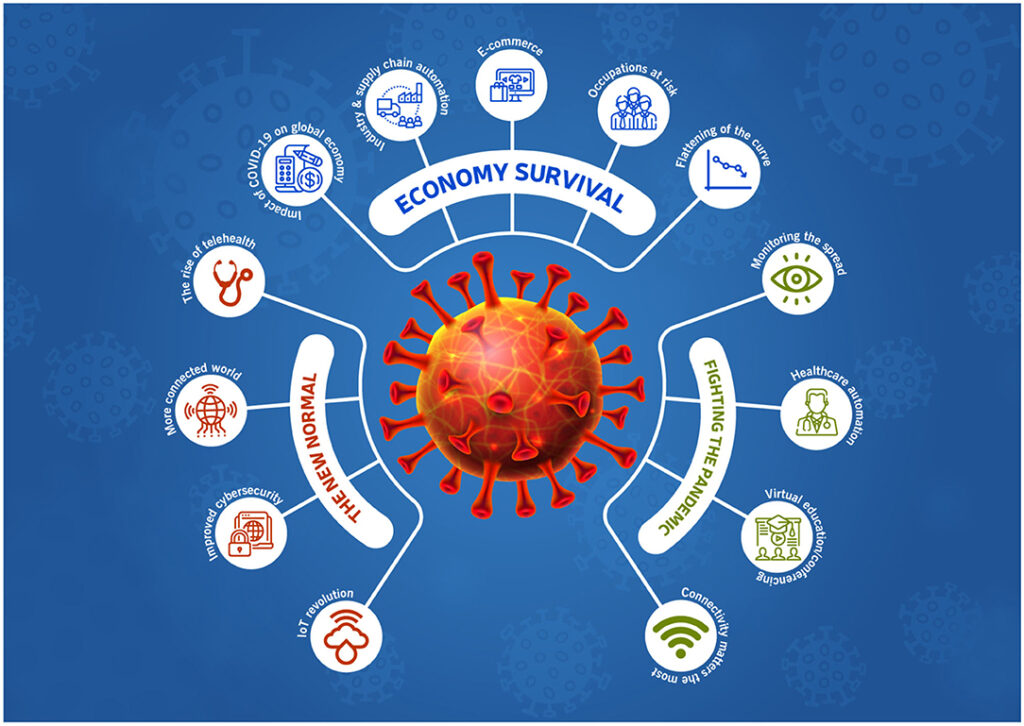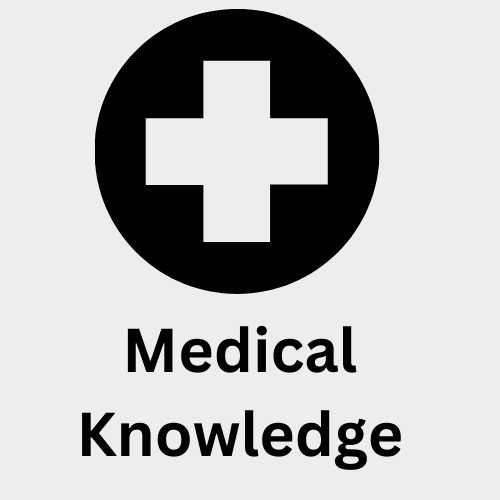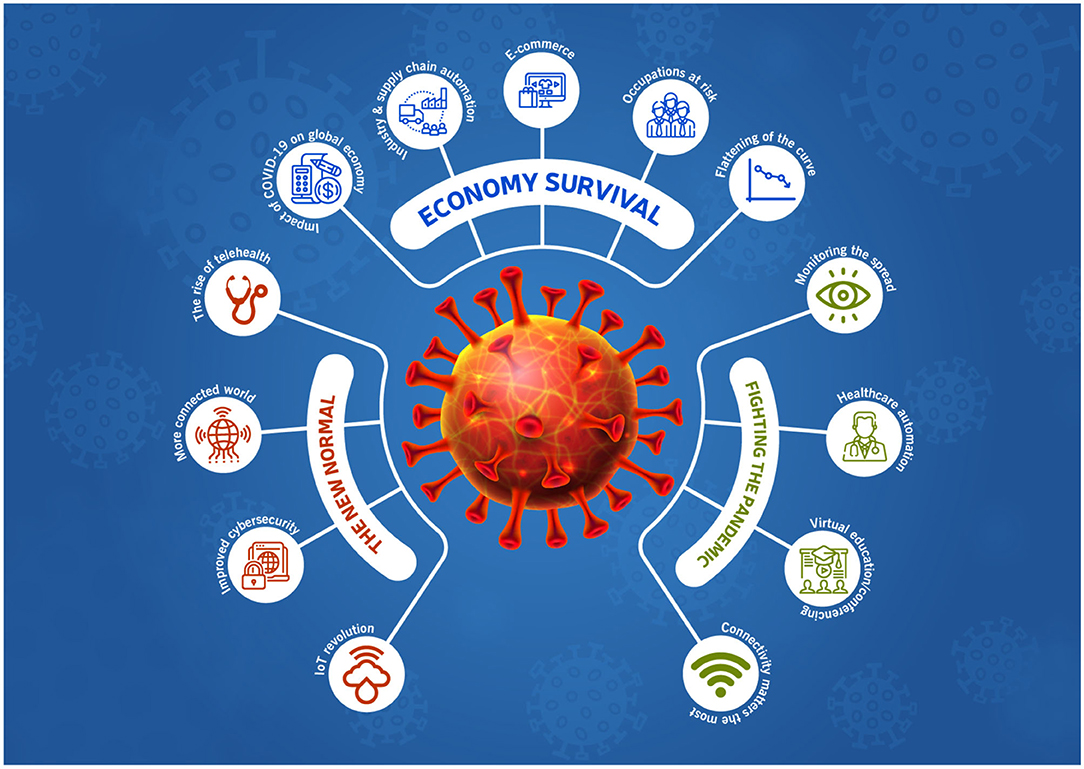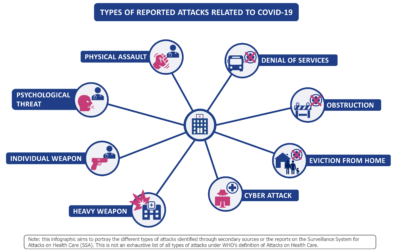Pandemic spread worldwide throughout history yet COVID-19 exposed the central importance of technology for healthcare leadership in public health management.
Health management through technology integration during pandemics serves as a crucial lifesaving force which enables disease control measures and supports medical readiness development.
Investigation reveals the major function of technological solutions in pandemic disease management with specific recommendations for enhanced disease control through technology in future health emergencies.

Introduction
Pandemics, by their very nature, present massive challenges in terms of global health, economies, and societies. Management tools for outbreak control including traditional measures like social distancing and vaccination drive execution use slow manual systems and reactive operation methodologies.
The fast-paced technological progress now provides methods to take a previously unimaginable proactive approach in controlling pandemic diseases.
Technological solutions provide numerous powerful instruments which boost our capability to deal with epidemic diseases efficiently.
This article examines technological breakthroughs that transform pandemic response capabilities as well as discusses future health crisis control potential of these tools.
🔘 Disease Surveillance and Early Detection
- The early discovery of pandemic outbreaks stands as the fundamental requirement for pandemic control operations. The discovery of new outbreaks at their earliest stages enables containment efforts that halt disease spread to prevent worldwide outbreaks.
- Through technology systems health authorities can perform real-time tracking of emerging pathogens and learn about their development soon after their appearance. AI and Machine Learning for Predictive Modeling AI alongside machine learning capabilities have transformed the way we track disease outbreak predictions in the present day.
- Numerous AI algorithms analyze extensive information gathered from various sources which include news articles together with social media content and movement data and historical medical records to reveal impending disease outbreak zones before they spread across large areas.
- Such predictive models enable public health organizations to spend their funds wisely for the delivery of prompt intervention methods. Hangzhou Big Data conducted AI modeling to forecast COVID-19 spread throughout different geographical areas which assisted governments in creating lockdown strategies and travel control measures.
- Genomic Sequencing for Early Detection The detection process received a major improvement through the implementation of genomic sequencing methods.
- Scientists determine virus pathogen evolution and transmission patterns through genome sequencing to monitor viral mutation development. The discovery of SARS-CoV-2 virus and its variants during the early stages became possible through this technological achievement which led scientists to create precise diagnostic tools and vaccination methods.
🔘 Contact Tracing and Digital Tracking
Health agencies use contact tracing as an essential procedure to prevent infectious disease spread. Previously doctors used manual interviews to obtain contact information from patients who tested positive for infections.
This traditional approach needs both substantial time and many dedicated labor resources to complete the process. Digital Contact Tracing Apps Digital contact tracing apps make use of Bluetooth or GPS smartphone capabilities to record individual contacts semi-automatically.
The application will notify users after a positive COVID-19 diagnosis thus notifying potentially exposed individuals to prevent additional disease spread.
Digital contact tracing apps generate immediate exposure assessments for users to help them pursue correct self-isolation procedures or seek tests at once.
Two Asian countries specifically South Korea and Singapore developed effective digital contact tracing applications which supported their ability to monitor COVID-19 transmission rates.
Privacy and Security Considerations Digital contact tracing has numerous beneficial qualities but users remain concerned about personal privacy together with data security issues.
To avoid losing public trust governments together with health departments need to design systems which guarantee system transparency and strict privacy law enforcement as well as user information protection.
🔘 Telemedicine and Remote
Healthcare Telemedicine has proven essential for healthcare system management across pandemic situations. Traditional in-person medical consultations became problematic due to stay-at-home restrictions which prompted healthcare providers to adopt remote medical services as an alternative.
Virtual Consultations and Online Diagnostics The functionality of telemedicine lets patients speak with medical professionals through virtual means which limits their exposure to illnesses present in healthcare centers.
Individuals who have sustained disabilities or psychological issues as well as those needing generalized medical guidance during a health crisis can benefit from virtual consultation services.
Telemedicine platforms have started deploying AI systems together with chatbot technology to conduct preliminary examinations for patients. The technology system evaluates patient symptoms followed by advice provision before deciding if more medical help is required.
Remote Patient Monitoring Remote patient monitoring (RPM) technologies proved essential for pandemics due to their increased utilization. RPM equipment with wearable devices provides healthcare professionals remote access to essential vital sign measurements such as heart rate together with blood pressure and oxygen levels.
RPM technology lets medical professionals detect necessary emergency interventions for patients before they must visit healthcare sites physically.

🔘 Vaccine Development and Distribution
Among the top disease control tools used today are vaccine medications. The rate at which vaccines reach production together with their distribution timeline directly influences how effective pandemic prevention measures become.
The rapid development together with distribution of vaccines has been propelled through technological advances. mRNA Vaccine Technology Vaccine technology experienced a major advancement when scientists developed mRNA vaccines.
Multicomponent mRNA vaccines differ from other vaccines by instructing cells to create viral proteins that activate immune responses rather than utilizing inactive or weakened viral matter.
The rapid COVID-19 vaccine development succeeded because of this technology which resulted in the creation of vaccines including Pfizer-BioNTech and Moderna products.
Rapid development capabilities for mRNA vaccines leads to a transformation of pandemic response because they streamline the process of quick vaccine deployment during future health emergencies.
Vaccine Distribution and Cold Chain Management Vaccine distribution to vast numbers of people proves to be an extremely difficult operation for a safe and timely deployment.
The correct vaccine storage temperatures can be maintained throughout distribution using blockchain and Internet of Things (IoT) logistics technologies.
These technological systems offer present-time location tracking in combination with inventory systems which assist in avoiding vaccine delivery problems such as inadequate supplies or delayed shipments.
🔘 Public Awareness and Education
The swift spread of false information during emergencies happens at the same speed as disease transmission rates. The power of technology enables the distribution of correct information that helps the public learn about protective steps.
Social Media and Public Health Campaigns Social media serves as the main communication tool for people during global health emergencies.
Through social media platforms health organizations together with governments can transmit information toward broad-scale audiences for disease-related material and vaccination campaigns and preventive measures.
Public health authorities effectively reverse false information through social media platforms to transmit precise accurate advice as needed.
Digital Literacy and Health Education The implementation of technology enables better education in health topics alongside improvement of digital knowledge among citizens.
The combination of interactive websites together with mobile apps and e-learning platforms enables user education about identifying symptoms and acquiring treatment in addition to learning protection methods against infections. Such resources hold special value for locations with reduced medical facility accessibility.
🔘 Conclusion: A Technological Path to Better Control
The extensive role of technology during pandemic diseases has been proven essential in dealing with these outbreaks. The tools provided by technology enable disease monitoring and prevent injections and general public instruction which strengthens our capacity to fight infectious disease spread and maintain human survival.
Strategic adoption of technology will become crucial to develop a health system that shows better resistance and reaction capabilities worldwide. The COVID-19 crisis demonstrates the power of appropriate technology to manage pandemic diseases effectively while providing healthcare opportunities to all members of society.
Our ability to use technological power will gain strength through global partnerships and innovation advances because we need it to handle current pandemic situations and stop upcoming health crises from developing into global catastrophes.
Key Takeaways: Pandemic control heavily depends on technology through its ability to track diseases early and perform tracing operations and distribute vaccines.
Real-time outbreak prediction monitoring becomes possible through the combination of AI with machine learning and genomic sequencing.
Remote patient monitoring along with telemedicine services enhance healthcare services during pandemics because they cut down face-to-face clinical encounters while lowering patient risk of disease transmission.
The development of mRNA vaccines enables healthcare professionals to create quick reactions against new pathogens through vaccine development innovations.
Social media outreach campaigns run by public health teams fight against false information while teaching the public about protection methods. Technology will stay in the lead position of our attempts to control pandemic diseases and successfully manage and defeat these worldwide health emergencies throughout the future.



